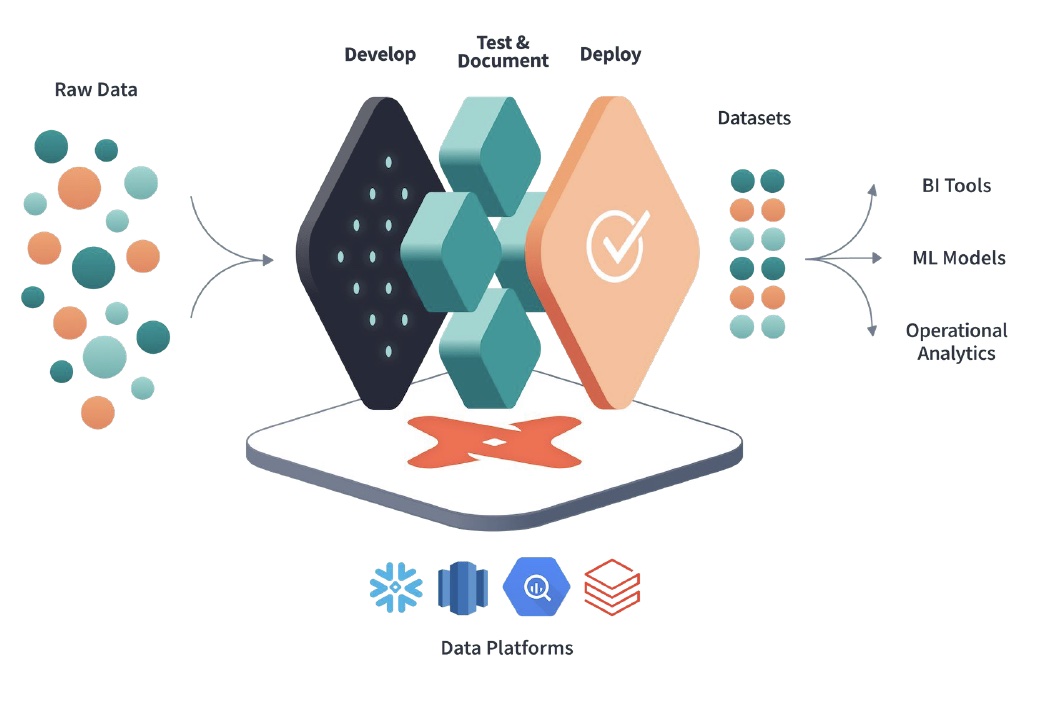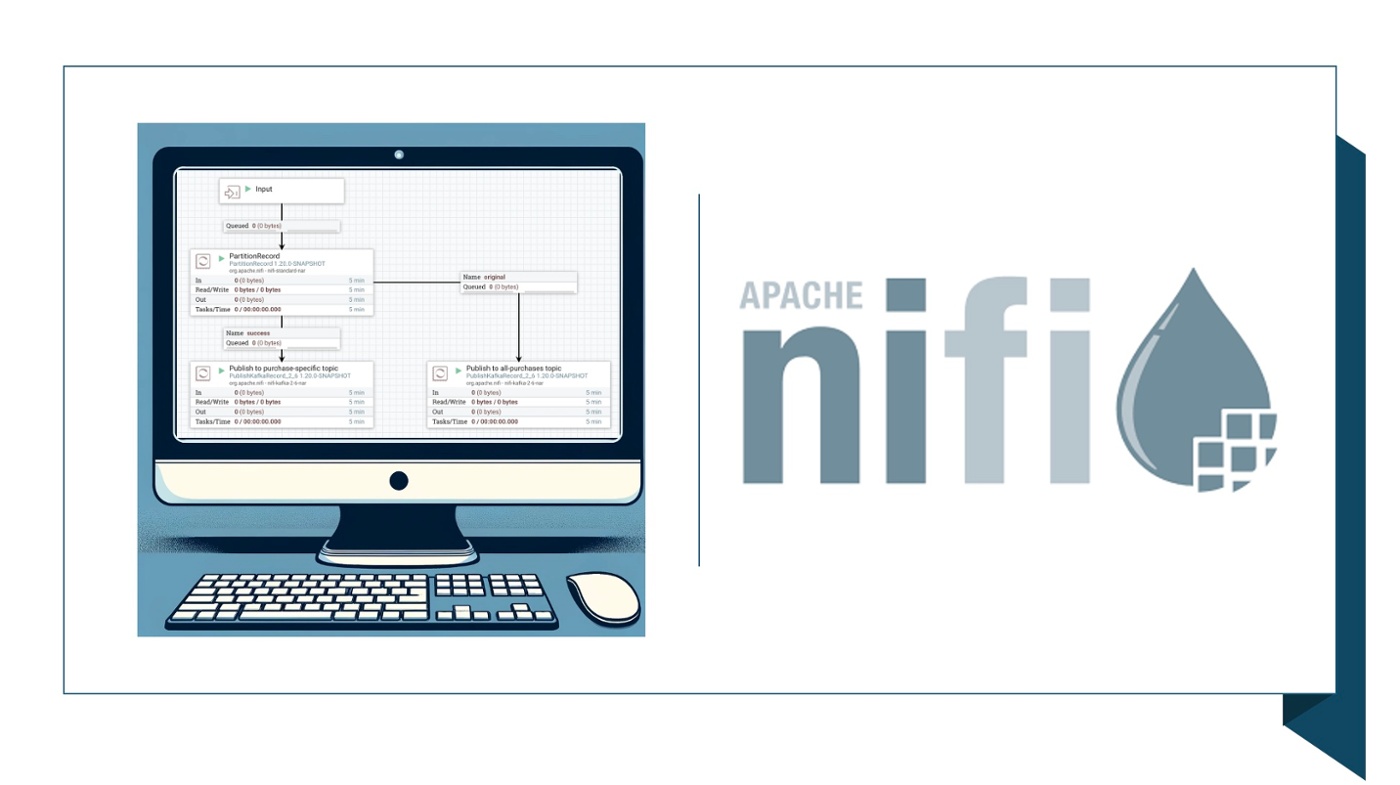Big Industries Academy
dbt Explained

In the expansive world of data engineering, dbt (data build tool) has carved out a distinct niche. Designed to simplify and streamline the transformation stage of the data warehouse using SQL, dbt offers a compelling approach to data integration. This blog post explores what dbt is, the company behind it, its origins, core use cases, and how it compares to other ETL (Extract, Transform, Load) tools.
What is dbt?
dbt is an open-source command-line tool that allows data analysts and engineers to transform data in their warehouse more efficiently. It uses SQL for performing transformations, making it accessible to a wide range of professionals who are already familiar with SQL. Unlike traditional ETL tools where transformation is a separate step, dbt integrates the transformation process into the data warehouse, facilitating transformations as part of the ELT (Extract, Load, Transform) process.
The strength of dbt lies in its simplicity and effectiveness in combining data modeling, testing, and documentation. By treating data transformation as code, dbt allows users to apply software engineering practices like version control, peer review, and automated testing to their data transformation processes.
The Company Behind dbt
dbt is developed by Fishtown Analytics, which was renamed dbt Labs as the tool gained prominence. The company has been an active contributor to the open-source community, driving the tool's development and supporting a growing ecosystem of plugins and integrations.
Origins of dbt
The idea for dbt was born out of a need for more robust data transformation tools within the analytics workflow. Frustrated by the limitations of existing ETL tools and complex data engineering pipelines, the founders of Fishtown Analytics (now dbt Labs) sought to create a tool that empowered analysts to own the transformation process. First released in 2016, dbt has since evolved from a simple transformation tool to a comprehensive data engineering framework.
Core Use Cases for dbt
- Data Transformation: At its core, dbt is used to perform transformations on data loaded into a warehouse, allowing teams to transform, test, and deploy data models with ease.
- Data Testing: dbt supports rigorous testing of data models to ensure data integrity and accuracy, which is crucial for maintaining trust in data outputs.
- Documentation Generation: dbt automatically generates documentation for data models, which is vital for governance and understanding dependencies in complex data pipelines.
- Workflow Management: With dbt, data teams can streamline workflow management by scheduling and orchestrating transformations directly in the warehouse.
dbt vs. Apache NiFi
While dbt and Apache NiFi both handle data transformations, they serve different purposes in the data pipeline:
dbt (data build tool) is primarily a transformation tool that operates on data already loaded into a data warehouse. dbt is used to manage data transformations in SQL and build data models. It is not your tool of choice for data collection or real-time streaming.
Apache NiFi, on the other hand, is more about managing data flows, which includes data collection, routing, transformation, and distribution tasks. It operates on a wide variety of data formats and sources, providing a real-time, GUI-based approach to data flow management.
Comparison to Other ETL Tools
While traditional ETL tools handle extraction, transformation, and loading as separate steps, dbt focuses specifically on the transformation step but does so within the warehouse, advocating for an ELT approach. Here are some comparative insights:
- Accessibility: dbt uses SQL, a language familiar to many data professionals, unlike some ETL tools that may require proprietary languages or extensive programming skills.
- Integration: dbt integrates tightly with modern data warehouses like Snowflake, BigQuery, and Redshift, leveraging their compute power to handle large-scale data transformations efficiently.
- Agility: The use of version control and testing facilitates agile methodologies in data teams, promoting faster iterations and high-quality outputs.
- Cost-effectiveness: Being an open-source tool, dbt can be more cost-effective compared to full-fledged ETL platforms that may come with hefty licensing fees.
Conclusion
dbt has significantly impacted how data teams handle data transformation, offering an agile, efficient, and reliable tool that aligns with modern data practices. By empowering analysts to use SQL and apply development best practices to the data transformation process, dbt not only simplifies data workflows but also enhances the overall integrity and usability of the data. For companies looking to modernize their data stack while keeping costs in check, dbt presents a compelling alternative to traditional ETL tools.

Matthias Vallaey
Matthias is founder of Big Industries and a Big Data Evangelist. He has a strong track record in the IT-Services and Software Industry, working across many verticals. He is highly skilled at developing account relationships by bringing innovative solutions that exceeds customer expectations. In his role as Entrepreneur he is building partnerships with Big Data Vendors and introduces their technology where they bring most value.




